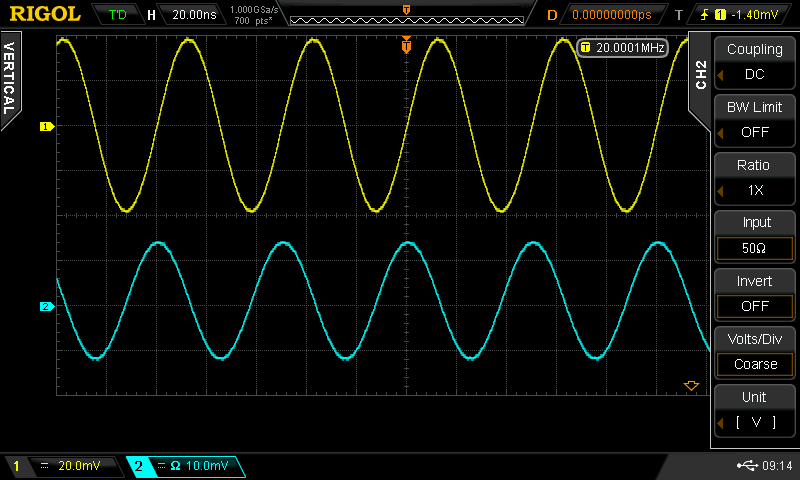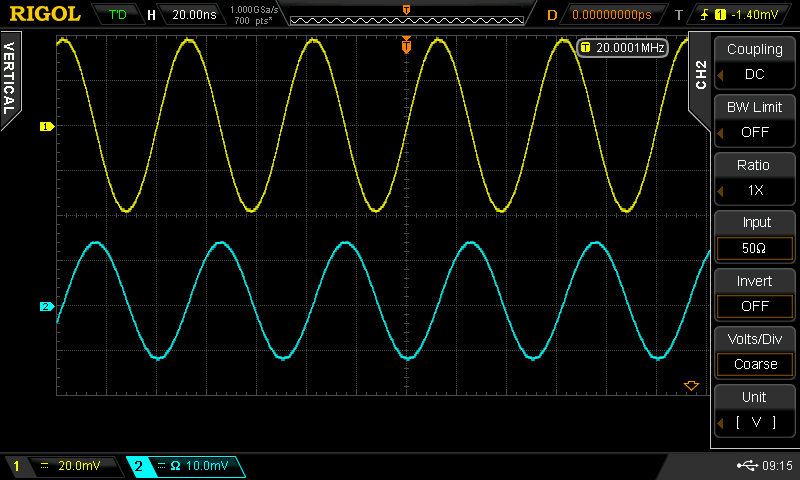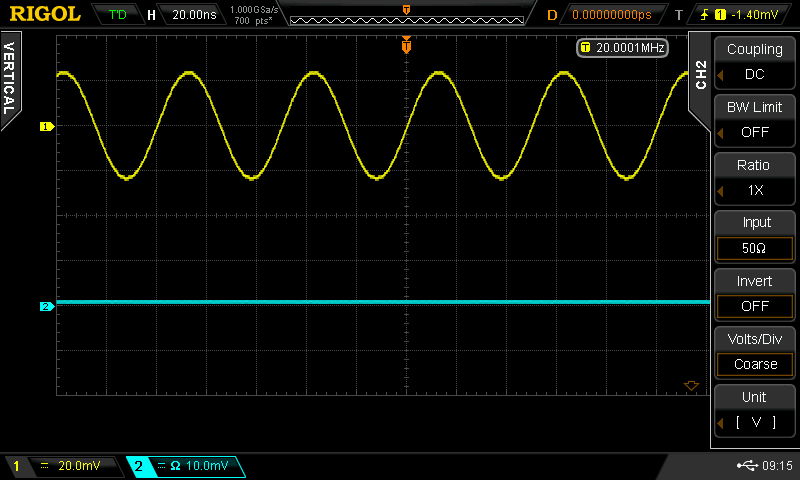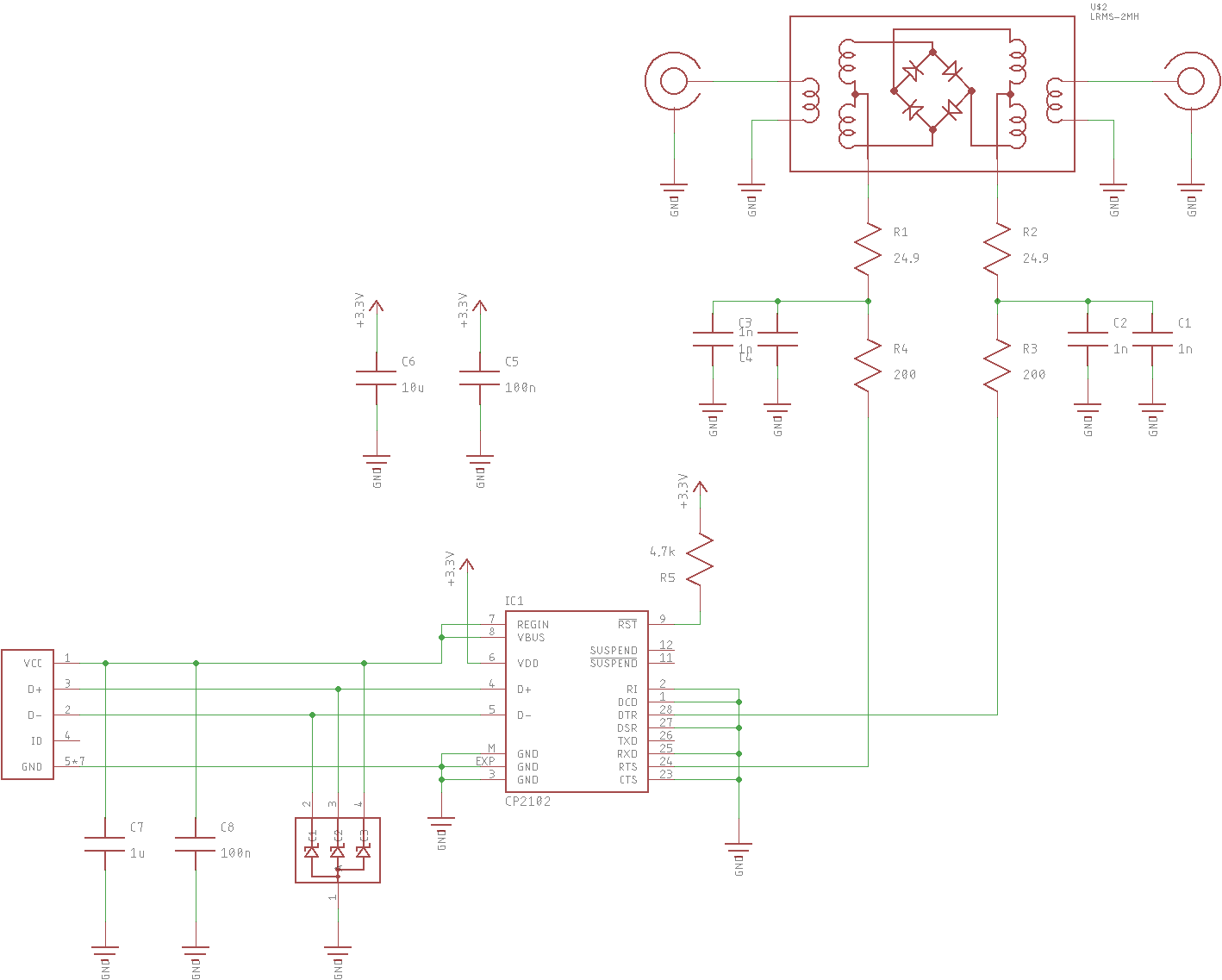-
Assembled & Tested
03/09/2018 at 02:06 • 2 commentsI populated the PCB this evening. After re-seating the CP2102 with a little hot-air, it actually works. Somehow the QFN package is a little finicky. Maybe my PCB footprint is bad? Anyway, here it is, before I solder the tin shield over the RF section:
![]()
I tested the USB connection on an old PC and through a lousy old USB hub that I don't care about. Just in case. But nothing got fried :-(
Since the bias for the mixer diodes comes from the signal levels on the RTS and DTR lines, I didn't even have to write any software to test it. I fired up gtkterm and used F7/F8 to toggle the control lines. With DTR high and RTS low, the RF output is in-phase, while with DTR low and RTS high, the output is inverted, giving a 180-degree phase shift. Or, maybe it's the other way around - it doesn't really matter for my purposes.
So far, I just tested it with the output of the DDS I happened to have on the bench at the time. The 20 MHz output I used doesn't say much about the performance near 1 GHz, but at least the basics work. Here's the input (yellow) and output (cyan) with the switch in one position:
![]()
and in the opposite:
![]()
There's a nice 180-degree shift between the two.
Although I don't need it for my application, you can also disable the output by setting DTR and RTS to the same value (although I suspect setting them both low might be best). Here's what that looks like:
![]()
I don't know how much attenuation you really get in this case, but I'm not using it for anything anyway.
-
Schematic V1
02/22/2018 at 22:26 • 0 commentsHere's the schematic. It uses a CP2102N for USB connectivity, and ignores the serial data lines, instead just using DTR and RTS to control the switch.
![]()
A Mini-Circuits LRMS-2MH mixer (5 - 1000 MHz) is used to selectively invert the phase of the input signal. When DTR is high and RTS low, the output has one phase, and with DTR low and RTS high, the output is shifted 180-degrees (pi!). In a more typical use, the IF port is driven with a single-ended input matched to 50-Ohms. In this case, I'm driving it balanced with 24.9 Ohms in each leg. Same thing. The LRMS-2MH is nice in this respect, since both sides of the IF are brought out to pins. In many mixers, one side of the IF is grounded internally.
 Ted Yapo
Ted Yapo



